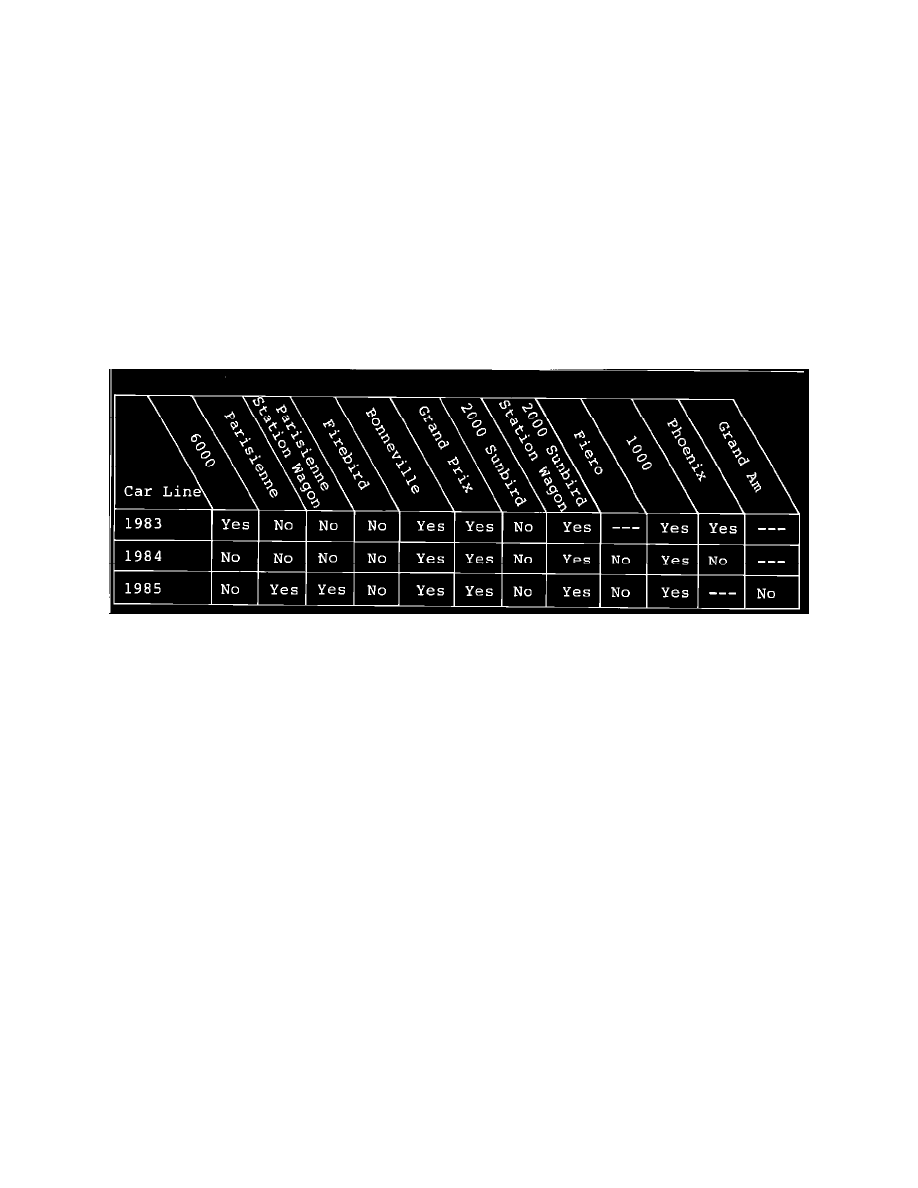T1000 L4-111 1.8L DSL (1983)

Towing Information: Technical Service Bulletins
Trailer - Towing Information
Number
85-0-1
Date
10/84
Subject:
TRAILER TOWING INFORMATION -
1983 TO 1985
Trailer Towing
We receive many questions on trailer towing capacity for Pontiac vehicles. Attached are details for 1983, 1984 and 1985. This information is also
contained in the Pontiac Merchandising Manual.
Bumper Mounted Hitches
The use of light weight bumper materials on some car lines means that bumper mounted hitches can no longer be used on those car lines.
Inability to use a bumper hitch does not mean a trailer cannot be towed. It does mean that at least a light weight frame/body hitch is required. In
addition, the ability to use a bumper hitch does not mean that the car can tow a trailer. Consult the attached sheets for the car's towing ability. SEE
PAGES 2-7
TRAILER TOWING TABLE
In the following table, "yes" indicates that you can use a bumper mounted hitch. In no case should a bumper mounted hitch be used to tow more than
2,000 pounds, or more than 200 pounds torque weight.
WHAT YOUR TRAILER TOWING CUSTOMERS
SHOULD KNOW WHEN ORDERING THEIR NEW 1983 PONTIACS
All 1983 Pontiacs are capable of towing up to 1,000 lbs. But since trailering enthusiasts often wish to pull heavier loads, Pontiac offers a list of available
equipment to help them meet their varied trailering needs. Use the chart on the back side of this page to help your customers decide what equipment is
best for them. They'll get just what they're after. And you'll get more satisfied customers. Plus, by using the information below on Trailering
Considerations and Trailering Cautions, you can help answer many common questions your customers might have.
TRAILERING CONSIDERATIONS
NEW CAR BREAK-IN. Advise your customers to read the new car break-in instructions in their Owner's Manual. Also, we recommend a new Pontiac
be driven for 500 miles (800 kilometers) before trailer towing. During this initial break-in period, and for the first 500 miles (800 kilometers) of actual
trailer towing, Pontiac owners should avoid full-throttle starts and speeds over 50 mph (80 km/h). If a new engine, transmission, or axle is installed in
the car, the same care should be observed. MAINTENANCE. Don't forget to tell your customers that more frequent service is required when using a car
to pull a trailer For example, all trailer hitch bolts and nuts should be checked occasionally for tightness. For other information regarding special
maintenance requirements for trailers, direct your customers to their Owner's Manual and Maintenance Schedule folder. ENGINE COOLING SYSTEM.
Advise your customers to follow these instructions: The coolant level should be checked when their car engine is cool, before starting on a trip. A
temporary cooling system overload may be encountered on hot days. When pulling on a long grade, when slowing down after higher speeds, or after
long idle periods in heavy traffic. If overheating persists, their car should not be driven. And it should be checked by an authorized mechanic. HIGH
ALTITUDE PERFORMANCE. An engine loses approximately 4% of its sea level performance for every 1,000 feet of altitude. An engine operating at
10,000 feet above sea level will
lose approximately 40% of its performance. For pulling trailers at high altitudes, engines with higher sea level horsepower are recommended, as are
higher axle ratios. TIRES. The tires furnished on 1983 Pontiacs are qualified for trailer towing. When towing trailers using a dead-weight hitch, tires
should be inflated to the "Cold Tire Pressure" for 'Maximum Load" shown on the tire placard attached on the left front door. For trailers using
weight-distributing hitches, increase front tire pressure 2 psi above the "Cold Tire Pressure" for 'Maximum Load" shown on the tire placard. This
